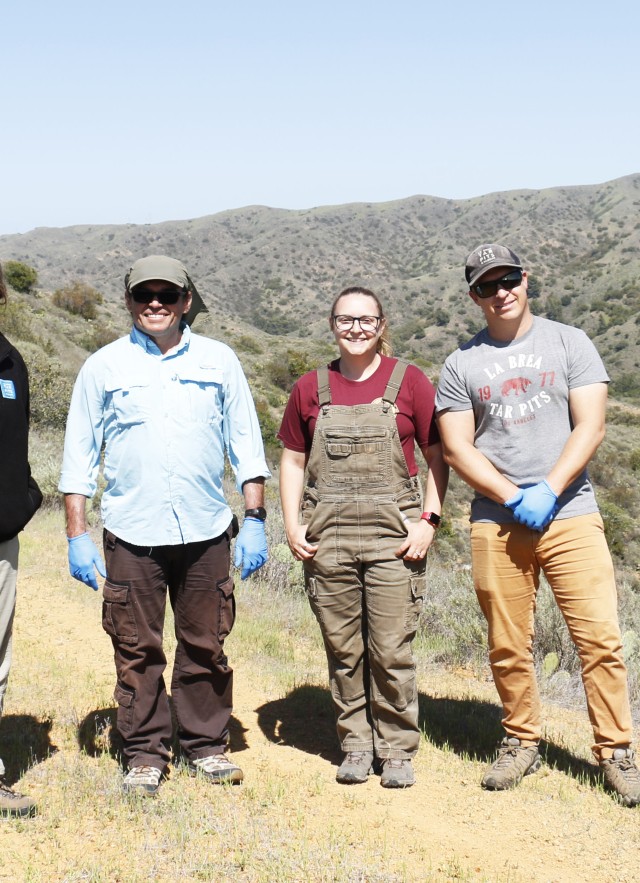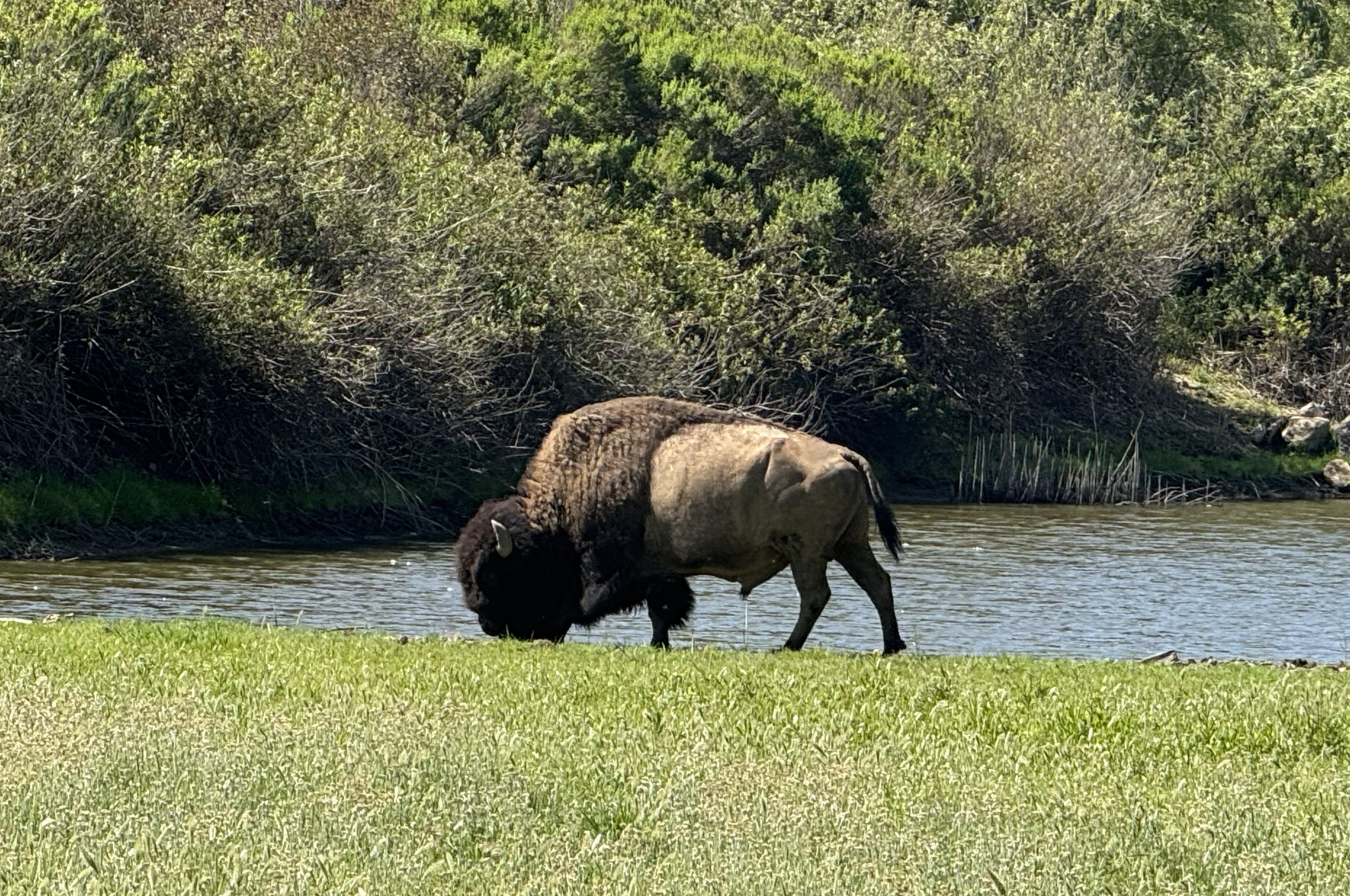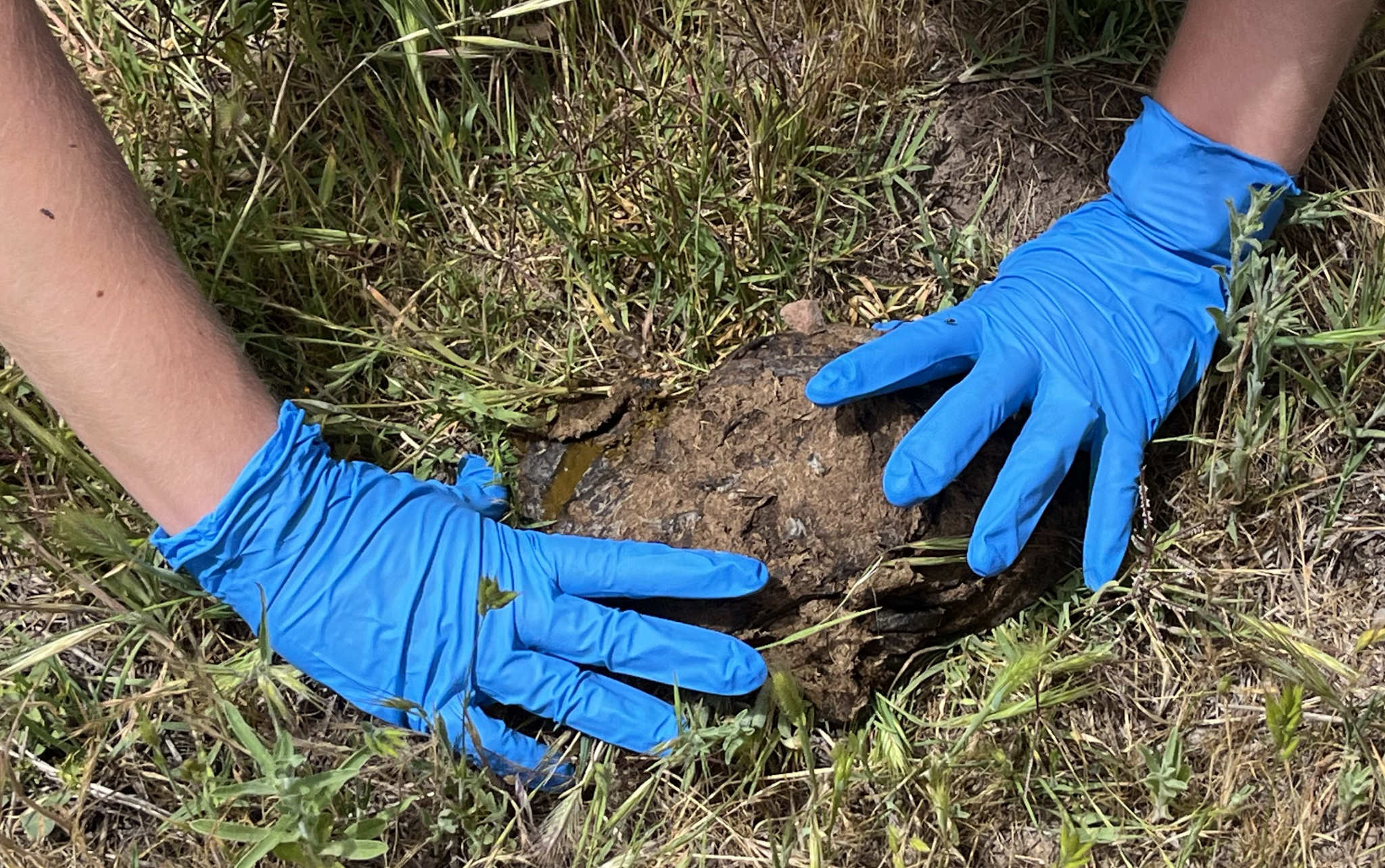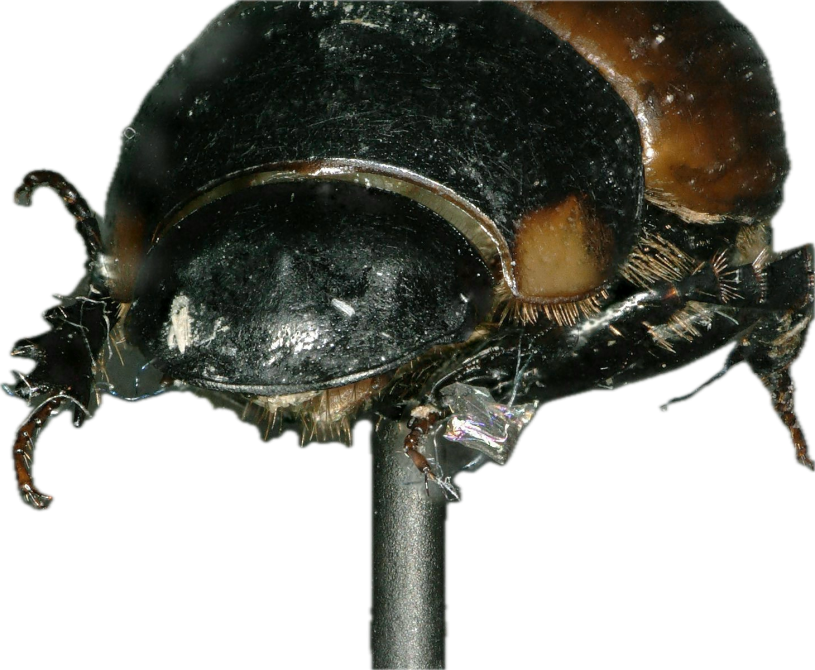BE ADVISED: Thursday, December 11, La Brea Tar Pits will close at 3:30 pm in preparation for a staff event. Please plan your visit accordingly.
Join the Dung Beetle Hunt
Walk in the shoes of La Brea Tar Pits scientists who ventured to a less-trodden part of Catalina Island to scout for dung beetles in bison poop!

Experience the day that the crew (and their pooperazzi) searched for the industrious bugs doing stinky and heroic work as part of the island ecosystem.
Before dawn one day last spring, three La Brea Tar Pits museum scientists boarded a boat bound for a rustic, mountainous stretch of Catalina Island in search of a hard-working bug—the dung beetle. They spotted pelicans on the docks and jellyfish and sharks in the water during their sail to the island. But once there, the team set their sights on massive hairy beasts—bison. There are about 100 of these hefty mammals roaming Catalina Island, having been introduced by a Walt Disney movie crew shooting a film in 1924.
Soon after their boots hit the dusty island terrain, the scientists piled into a jeep, guided by a staff member from the Catalina Island Conservancy which protects the island's landscape and native species. They traversed miles of dirt roads up mountains and into valleys on the lookout for patties deposited by the roaming herds. As they surveyed the landscape, the scatological jokes flew. But what was this poop patrol’s purpose?
They are trying to figure out which dung beetles are associated with bison, and how modern species on the island may connect with La Brea bison and La Brea dung beetles alive during the Ice Age. This comparative analysis could prove fertile ground for understanding our local environment over time.

The Scoop on Poop
More than 8,000 modern species of dung beetles, including the subfamilies Scarabinae and Aphodiinae of the family Scarabaeidae and a few species in the family Geotrupidae exist worldwide, and they have one of the filthiest jobs in the animal kingdom. The vast majority are attracted to large mammal herbivore droppings as a food source and also a place where their babies can safely grow. Some beetles are generalists (they’ll utilize any scat they find) while others are specialists, only partaking of the end product of one species. They fall into one of three behavioral categories: dwellers, tunnelers and rollers.
Once these beetles sniff a fresh pile of their preferred excrement, they fly over. This stinky waste contains the herbivore’s partially digested plant matter. The insects feed on the nutritious liquid, and use the dung to lay eggs and rear their young. Most dung beetles excavate tunnels to provide security for their developing young. Some may also use them for mating or brood balls, all of which aerate and nourish the soil. Dung beetles are a clear indicator of the health of an ecosystem.
“Without dung beetles, the patty is sitting on an area of the grass. It's like an ecosystem-destroyer. Part of what dung beetles do is that they take that dung and then put it back into the system. It's called nutrient cycling,” said Sean Campbell, Project 23 Preparator at La Brea Tar Pits who is co-leading this research.

You dung yet?
For two days on Catalina Island, the crew headed up and down the picturesque landscape prospecting for precious piles. With blue gloves and tweezers at the ready, they squatted by the patties and flipped them. Mostly they found spiders, flies, and caterpillars. The group located about 200 pancake-sized dung patties but found only a scant number of beetles in that scat—11 specimens comprising just one species—Aphodius fimetarius. This non-native species (likely hailing from Europe) has a black head and thorax, and a red abdomen. These are “dwellers,”—they live inside the patties and make very shallow little depressions in the soil. This species likely crossed over to Catalina by winging it, however they also might have hitched a ride with the transported bison or cattle.

Step Number Two
Once they bring their fecal friends back to the lab at La Brea Tar Pits, the next big move in the scientific investigation is to try to understand changing ecosystems by comparing beetle diversity over time. La Brea’s asphalt seeps, those unique, gooey death traps along mid-Wilshire, captured not just the Ice Age megafauna—including dire wolves, ancient bison, mammoths and giant sloths—but also fossils of tiny creatures, including insects, packed into those giants’ skulls and in the surrounding sediments. Currently more than 200 specimens of dung beetles have been identified in La Brea’s fossil record. ”There was a great diversity of dung beetles from the last 60,000 years in the La Brea record. One of our goals is to start radiocarbon dating some of these specimens to know when they existed at our site. By "pit averaging" (using other fossils dated from the same deposit that dung beetles were found) we know we have dung beetles from over 30,000 years ago that most likely used extinct mammal species fecal material,” said Campbell.
“This work is significant because the vast majority of dung beetles we find in our fossil record are extinct,” said Emily Lindsey, Associate Curator and Excavation Site Director at La Brea Tar Pits. “When you lose all the big dung-producers, like mastodons and camels and giant ground sloths, you lose the species dependent on that resource too.” That extinction had consequences—when cattle ranching intensified in the 1970s in North America, land managers imported dung beetles from Europe and Africa to deal with the land fouling—urination and defecation in the nutrient-rich vegetation— because the continent’s native guild had disappeared, presumably along with the Ice Age giants they depended on.